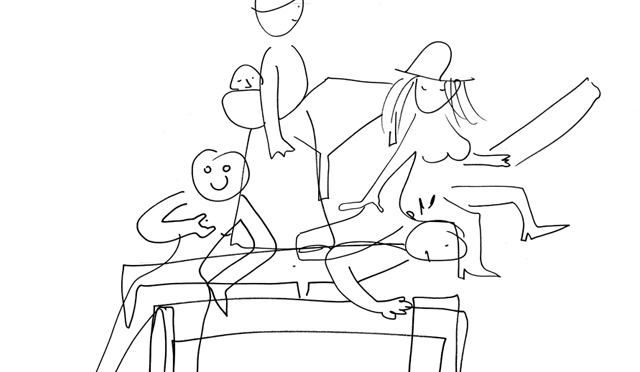Search
To search for an exact match, type the word or phrase you want in quotation marks.
A*DESK has been offering since 2002 contents about criticism and contemporary art. A*DESK has become consolidated thanks to all those who have believed in the project, all those who have followed us, debating, participating and collaborating. Many people have collaborated with A*DESK, and continue to do so. Their efforts, knowledge and belief in the project are what make it grow internationally. At A*DESK we have also generated work for over one hundred professionals in culture, from small collaborations with reviews and classes, to more prolonged and intense collaborations.
At A*DESK we believe in the need for free and universal access to culture and knowledge. We want to carry on being independent, remaining open to more ideas and opinions. If you believe in A*DESK, we need your backing to be able to continue. You can now participate in the project by supporting it. You can choose how much you want to contribute to the project.
You can decide how much you want to bring to the project.

A few Sundays ago we remembered the Time Capsules de Andy Warhol. Maybe it’s a sign of the times, something in the air, a sense of change or just pure coincidence, but if Warhol began (almost secretly) to accumulate objects in cardboard boxes in his house in New York, halfway through the seventies, at the same time on the East coast of America, Ant Farm were also making Time Capsules.
Ant Farm was a group of architects and activists in San Francisco, who in the last few years have been reconsidered in exhibitions such as SFMOMA or the one at the Centro Andaluz de Arte Contemporáneo, alongside Parda Poole. Thanks to Ubuweb we can consult some almost cult videos such as the re-enactment of Kennedy’s assassination in the streets of Dallas, The Eternal Frame (1976), or the 4 July celebrations where a Dorado Cadillac was driven into a pyramid of televisions, Media Burn (1968-1978).
The Time Capsules of Ant Farm are different from those of Warhol, more programmed and conscious of what they hold, fruit of a fascination with the future. Ant Farm made three between 1969 and 1975. The first was a cardboard box (like those of Warhol a few years later), which they sent to the Paris Biennial with Texan souvenirs (a Stetson…). On arriving in Paris, the box was opened, emptied and all the objects disappeared. The second, in celebration of the opening of the contemporary art museum in Houston in 1972, was a fridge full of objects from the supermarket and pharmaceuticals. It was supposed to be reopened in 1984, but the fridge was mislaid and only by chance found and opened in a ceremony at MoMA in San Francisco in 2000. That same year, the “Citizen’s Time Capsule” from 1975 was supposed to be opened, an Oldsmobile Vista Cruiser full of articles and images buried in the Artpark in Lewinston, in the state of New York. But there is one Time Capsule by Ant Farm left, the biggest and most recent, the old truck, the “Media Van” from 1971, which was filled with objects in 2008 to be reopened in 2030. We’ll just have to wait.

A*DESK is a critical platform focused on publishing, training, experimentation, communication and dissemination in relation to contemporary culture and art, which is defined by transversality. The starting point is contemporary art, because that is where we come from and this awareness allows us to go much further, to incorporate other disciplines and forms of thought in order debate issues that are relevant and urgent for understanding our present.
"A desk is a dangerous place from which to watch the world" (John Le Carré)